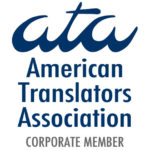Your business wants to target Spanish-speakers residing in the United States, and the best way to do this is to have your materials translated into Spanish. So you contract a translation agency to provide you with an effective translation. Simple, right? But your publicity materials and product descriptions are meant to be read by Spanish-speakers all over the country. You want your message to be understood by educated Cubans in Miami, bicultural and bilingual New York Puerto Ricans, and first-generation Mexican immigrants. Each of these groups has a distinct accent, vocabulary, and set of regional phrases.
How can one translation impact all of these groups? Some translation agencies provide translations into what the industry calls neutral, standard, or universal Spanish translations. Put into simple terms, these translations are meant to be understood by the widest range of Spanish speakers possible, and are mostly free of regionalisms and any marker that distinguishes word usage as being from a specific country.
Some caveats about “neutral” or “standard” Spanish:
• Many translators argue that there is no truly neutral Spanish, but rather only an attempt to make written material as widely understood as possible.
• By trying to reach every segment of the Hispanic demographic, you may end up with a diluted message (a conversation with your translation agency about whether to use a global versus local translation would avoid this situation).
• Because Spanish-speakers are so linguistically diverse, there are some English words that have no universally understood Spanish equivalent (again, a good translation agency will be able to produce a document that will be understood by most Spanish speakers).
• Neutral Spanish is better suited for certain types of translations such as technical or industry-specific ones in which the vocabulary is more uniform.
• Neutral Spanish may not be suited for a message involving jokes or double-entendres. A quip that would get a chuckle from a Colombian businessperson may leave a Mexican farm worker scratching his head, thus possibly alienating a potential customer.
A good translation agency will be able to guide you through the process of deciding whether a neutral translation is the most effective way to transmit your message. If your target audience is US, the best option is to translate into Neutral Spanish.




